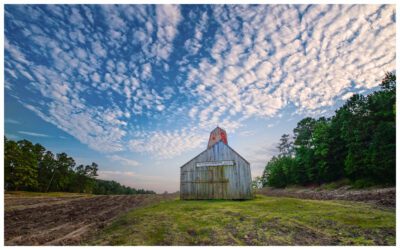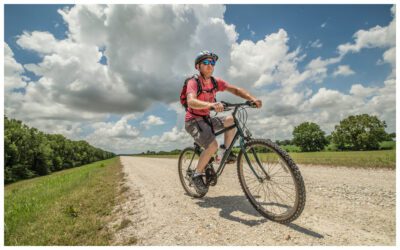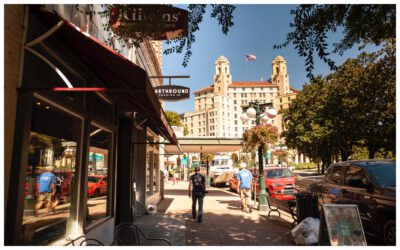With warmer days upon us and the end of school around the corner, it’s time to start thinking about summer vacations with the family! Popular vacations include visiting Florida beaches, amusement parks, and journeying out to the wild to visit one of our beloved national parks. While all of these are enjoyable, due to the pandemic, they do come with caveats – specifically when visiting a national park. Many of the national parks now require reservations to enter so they are better able to handle the massive amounts of visitors wanting to explore the wild.
Our family experienced this last summer, as we began our summer vacation. We’ve been visiting national parks for a very long time and never thought it would be a problem to get in. We found ourselves on the outskirts of a park having to shuffle our plan for the day because our reservations were pushed out to after three o’clock in the afternoon, or even the following day. This poses a problem for many because their travel arrangements don’t usually allow for extended time as lodging has already been locked down. Luckily, this change didn’t impact our family, as we were traveling in an adventure van!
Traveling in an adventure van, even though it sounds glamourous, is not for the faint of heart when traveling with two kids. We had to forego the kitchen pod and restroom facilities to accommodate our luggage, cooler, snack box, and dog kennel. However, our van did come with two double-size bunk beds, off-grid batteries and solar panels, but the most coveted amenity was the air conditioning for extremely hot heat waves. The van was loaded with inflatable kayaks, bikes, hiking gear and all the amenities that go along with those activities. So, you can imagine the limited amount of space we were living in!
We used the delay in our itinerary as a teaching moment for our children, that when life gives you lemons, you make lemonade. Luckily, we are adept at using phone apps to locate trails, river access points, and lakes that are near our area. While waiting for our reservation to enter the national park, we located a trail just to the south to hike. Now, keep in mind the trails outside of most national parks are part of a wilderness or forest area. Most trails outside of the parks are not maintained to the level of national parks and are filled with obstacles like downed trees, rockslides, limited water, and wildlife not accustomed to seeing people often.
Hiking in these areas comes with a responsibility of preparation and experience. The most important things to think about are the wildlife and environmental aspects in that area. When hiking in the desert, water, sun, and venomous snakes must be on your radar. Take twice the amount of water you think you’ll need to avoid dehydration, dress in sun-protective clothing, wear a hat, pace yourself, and watch out for critters when sitting on or around rocks.
When hiking in the mountains out west, water, sun, high elevations, and very big animals need to be top of mind. Always hike with more water than you think you’ll need, wear sun-protective clothing, and watch for signs of altitude sickness, weather, and predators of that region. Hiking in high elevation exposes your body to less oxygen, so pay attention to headaches and nausea as you ascend the mountains. We make sure to hike slowly and drink plenty of water to keep from getting altitude sickness. Also, apply sunscreen and bring more to reapply as the sun will get more intense above the tree line. Another hazard is lightning storms when you’re hiking above the timberline. We always pack rain jackets for afternoon showers and constantly watch the skies for thunder clouds gathering. You want to ensure if you see thunder clouds that you can retreat and take cover in the trees. Many injuries that happen in the mountains are related to lightning strikes which are even more dangerous when you are five to seven miles from your car. Carrying a Garmin device is recommended, especially when hiking with children because you can signal for help with a push of a button.
Hiking with very large predators may be intimidating, but with some preparation and tips, can be done successfully. Large predators include mountain lions, wolves, moose, and bears. Most people are bear aware and often won’t hike a trail because they fear a bear encounter. When hiking in the lower forty-eight states there are two bears you could encounter on the trail, black bears and grizzlies. Unless you’re hiking around Yellowstone, the northeast side of Idaho’s panhandle, or the western part of Montana, you are probably hiking with black bears. As with all bears, most are quite wary of people and want nothing to do with us.
It is the hikers’ responsibilities to make lots of noise, practice pack-in pack-out principles and to carry bear spray when you hike. We like to sing songs and hoop and holler up the trail with the kids, to let all predators know we have entered their habitat. That gives them time to clear off the trail and gives time for mother bears to gather their cubs, so there are no surprise encounters. We carry in food like peanut butter and jelly sandwiches that don’t have a smell that could lure in any unwanted picnic guests to join us. Leave the tuna fish sandwiches for another day! We also pack-out any food containers or wrappings. This not only keeps the trail clean but also avoids “feeding” the wildlife, so they don’t become aggressive to other hikers when they are in search of food. Lastly, we always carry bear spray and are familiar with how to use it.
Hike in large groups and try to avoid hiking at dawn or dusk, as those are low light periods when animals may be looking for food and water. The only time our family has had a close encounter with a bear was coming down from a hike at dusk. We started our seven-mile hike later in the morning and got distracted by the huckleberry bushes on the way up the trail and on the way down. We also didn’t do adequate research on the area we were hiking and didn’t realize the trail was on the other side of a grizzly bear sanctuary, so yes, lots of big bears. We always hike with one adult in the front, kids in the middle, and another adult in the back. We were halfway down the trail when a very loud and aggravated grunt came from about twenty-five yards above the trail. We instantly froze and positioned the kids behind a big tree between the grunt and the trail. We pulled out both cans of bear spray and listened and waited. We knew that the grunt was a warning signal and that we had interrupted the bear’s path down to the creek and he didn’t want to harm us, but just was irritated that we were in his way. By waiting for the bear, we were able to hear him stomp off through some down timber and circle around us. As soon as we knew what direction the bear headed, we quickly got down the trail to our car, bear spray cans still in our hands and ready. Lesson learned; now we are very cognizant of the time of day we come down from a hike.
So, this summer if your plans include exploring the outdoors, be prepared on all levels! Most national parks are accepting reservations on the website so you can ensure entry for the day and time of your choice. Plan for alternative activities that are close to your destination. Check out nearby trails, river accesses, lakes, nature centers, wildlife refuges, museums, and cultural exhibits in case your well- thought-out plans go awry. Some of our favorite places to visit were unusual antique stores and cultural centers we happened to stop in because our plans didn’t pan out. Remember, it’s about the journey, not the destination!




